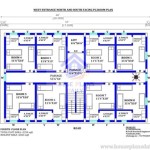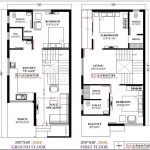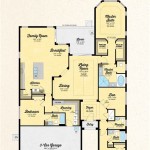Travel Trailer Dog House Plans: Creating a Comfortable Space for Your Canine Companion on the Road
Traveling with pets, particularly dogs, is becoming increasingly common. As more individuals embrace the nomadic lifestyle or embark on extended road trips, the need for secure and comfortable accommodations for their furry companions within travel trailers becomes paramount. While some dogs adapt readily to the confined space of a travel trailer, others may benefit significantly from a designated dog house. Designing and constructing a custom dog house within a travel trailer offers a tailored solution, ensuring the dog's comfort, safety, and well-being while traveling. This article explores various considerations and plans for constructing a travel trailer dog house, encompassing design principles, material selection, safety features, and space optimization.
Key Considerations Before Construction
Before embarking on the construction of a travel trailer dog house, several critical factors must be addressed. These considerations directly influence the design, size, and overall suitability of the dog house for both the dog and the travel trailer environment. Careful planning at this stage can prevent potential issues later on and ensure a successful integration of the dog house into the limited space of the trailer.
Firstly, it is crucial to accurately measure the available space within the travel trailer. This involves identifying a suitable location for the dog house, taking into account any existing furniture, appliances, or structural elements that may impede its placement. Measure the length, width, and height of the designated area meticulously. The dog house should not obstruct pathways, doorways, or essential functions within the trailer. Prioritize space efficiency; the dog house should provide adequate room for the dog to stand, turn around, and lie down comfortably, without consuming excessive living space.
Secondly, consider the dog's size and breed characteristics. The dog house should be appropriately sized for the dog's dimensions; a dog house that is too small can be restrictive and uncomfortable, while one that is too large may feel insecure and drafty. Measure the dog's height (from floor to shoulder), length (from nose to base of tail), and width (at the widest point of the body). Add a few inches to each dimension to provide ample room for movement and comfort. Factor in the dog's breed tendencies; some breeds prefer enclosed spaces for security, while others prefer open designs that allow for greater visibility. Senior dogs or dogs with mobility issues may require a lower entry point or a ramp for easy access.
Thirdly, assess the ventilation and climate control within the travel trailer. Travel trailers can experience significant temperature fluctuations, particularly during summer and winter months. The dog house design should incorporate adequate ventilation to prevent overheating or excessive humidity. Consider adding ventilation openings, such as screened windows or vents, to promote airflow. If the travel trailer has an air conditioning or heating system, position the dog house in a location where it can benefit from these systems. Insulating the dog house walls and roof can also help to regulate temperature and provide a more comfortable environment for the dog.
Design Principles for Travel Trailer Dog Houses
The design of a travel trailer dog house should prioritize functionality, safety, and aesthetic integration with the existing interior of the trailer. A well-designed dog house will provide a comfortable and secure space for the dog while minimizing disruption to the overall living area. Several design principles can guide the construction process, resulting in a practical and visually appealing structure.
Modular design is highly advantageous for travel trailer dog houses. Constructing the dog house in modular sections allows for easier assembly and disassembly, which is particularly beneficial for transportation or storage. Modular components can be pre-cut and assembled on-site, minimizing the need for extensive modifications within the trailer. Consider using interlocking joints or removable fasteners to connect the modules, ensuring stability and durability. This approach also facilitates future modifications or upgrades to the dog house design.
Utilizing vertical space efficiently is crucial in the confined environment of a travel trailer. Instead of opting for a sprawling, ground-level dog house, consider a design that incorporates vertical elements. This could involve adding a raised platform within the dog house to provide a vantage point for the dog or integrating storage compartments above or below the sleeping area. A raised platform can also help to keep the dog dry and comfortable, particularly in damp conditions. Storage compartments can be used to store dog food, toys, or other pet-related supplies, maximizing the use of available space.
Incorporating safety features is paramount in any dog house design, especially within a travel trailer. The dog house should be constructed from non-toxic materials that are safe for the dog to chew or lick. Avoid using sharp edges, exposed fasteners, or materials that could splinter or cause injury. Ensure that the entrance to the dog house is large enough for the dog to enter and exit comfortably, without the risk of getting stuck. Consider adding a latch or secure closure to the dog house to prevent the dog from escaping during travel. The latch should be easily accessible to humans but difficult for the dog to manipulate.
Material Selection and Construction Techniques
The choice of materials for a travel trailer dog house directly impacts its durability, weight, and overall aesthetic. Selecting appropriate materials and employing sound construction techniques are essential for creating a long-lasting and safe structure. Consider factors such as weight, moisture resistance, and ease of workability when choosing materials.
Plywood is a commonly used material for dog house construction due to its relatively low cost, availability, and workability. Marine-grade plywood is particularly suitable for travel trailers, as it is resistant to moisture and warping, which is crucial in environments with fluctuating humidity levels. When using plywood, ensure that the edges are properly sealed to prevent moisture penetration and splintering. Apply a non-toxic sealant or varnish to protect the wood from wear and tear. Consider using thinner plywood sheets (e.g., ¼-inch or ½-inch) to minimize weight. However, appropriate bracing will be needed to provide strength and rigidity to the dog house frame.
Alternatives to plywood include lightweight composite materials, such as foam board or corrugated plastic. These materials are typically lighter than plywood and offer excellent insulation properties. However, they may not be as durable as plywood and may require additional reinforcement to withstand the rigors of travel. When using composite materials, ensure that they are non-toxic and safe for dogs. Adhesives and sealants used in conjunction with these materials should also be carefully selected to avoid potential hazards.
The construction techniques used to assemble the dog house should prioritize strength, stability, and ease of assembly. Consider using joinery techniques such as mortise and tenon joints, dado joints, or rabbet joints to create strong and durable connections between the different components. These joinery methods provide superior strength compared to simply screwing or nailing the pieces together. Use high-quality screws or fasteners that are designed for use with the chosen materials. Apply a waterproof adhesive to the joints to further enhance their strength and prevent moisture penetration. Ensure that all edges and corners are rounded or smoothed to prevent injury to the dog.
Integrating the Dog House into the Travel Trailer Environment
The successful integration of a dog house into a travel trailer requires careful consideration of the existing layout, functionality, and aesthetic of the interior. The dog house should not only provide a comfortable space for the dog but also complement the overall design of the trailer. Thoughtful planning and execution can result in a seamless and harmonious integration.
Choosing the right location for the dog house is crucial. Identify an area that is out of the main traffic flow but still easily accessible for both the dog and the owners. Consider placing the dog house near a window or vent to provide natural light and ventilation. Avoid placing the dog house in areas that are prone to excessive heat or cold, such as near the furnace or air conditioner. A corner location is often a good choice, as it can provide a sense of security and enclosure for the dog. Ensure that the location allows for easy cleaning and maintenance of the dog house.
Securing the dog house to the travel trailer is essential to prevent it from shifting or tipping over during travel. Use appropriate fasteners, such as screws or bolts, to attach the dog house to the floor or walls of the trailer. Consider using rubber or felt pads between the dog house and the trailer surfaces to prevent scratching or damage. Ensure that the fasteners are securely tightened and that the dog house is stable. Periodically check the fasteners to ensure that they remain tight and that the dog house is securely attached.
Finally, ensure the dog house design complements the interior décor of the travel trailer. Match the materials and finishes to the existing cabinets, furniture, or flooring. Consider using paint, stain, or fabric to customize the dog house to match the overall aesthetic. This can help the dog house blend seamlessly into the interior and enhance the overall visual appeal of the travel trailer. Consider the addition of a comfortable dog bed or blanket inside the dog house to encourage the dog to use it and create a cozy and inviting space.

Pet Camper A Tiny Dog House Shaped Like Trailer With Custom License Plates

Diy Dog House Camper

Build A Mini Pet Camper Diy Projects For Everyone Dog House Outdoor

Diy Dog House Projects And Tutorials Free Plan Camper

Miniature Dog Campers Retro Houses For Pets Designs Ideas On Dornob

Now Your Pooch Can Have His Own Retro Camper Too Dog House Diy Cool Houses Plans

Dog House Camper Pet Trailer

Rv For Your Pet 30 Ideas And Example Check More At Https Gotravelsplan Com Camper Dog House Houses Unique Beds

Creative Dog House Designs

10 Incredible Dog Houses For Your Best Friend Family Handyman








